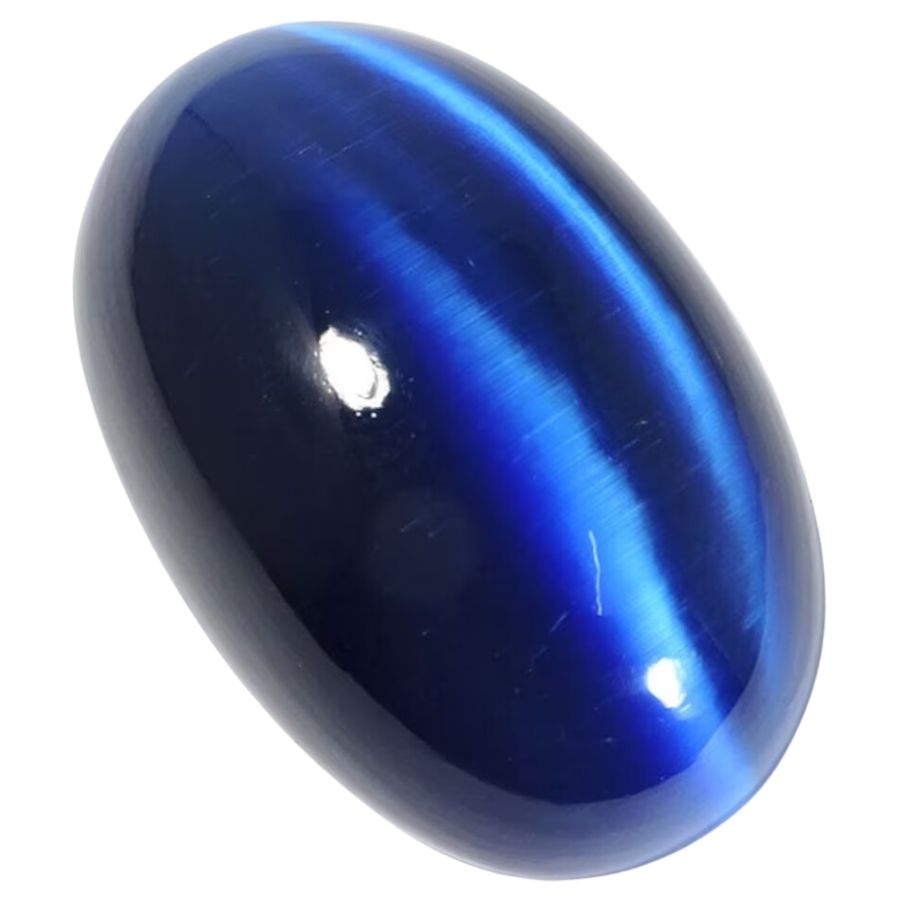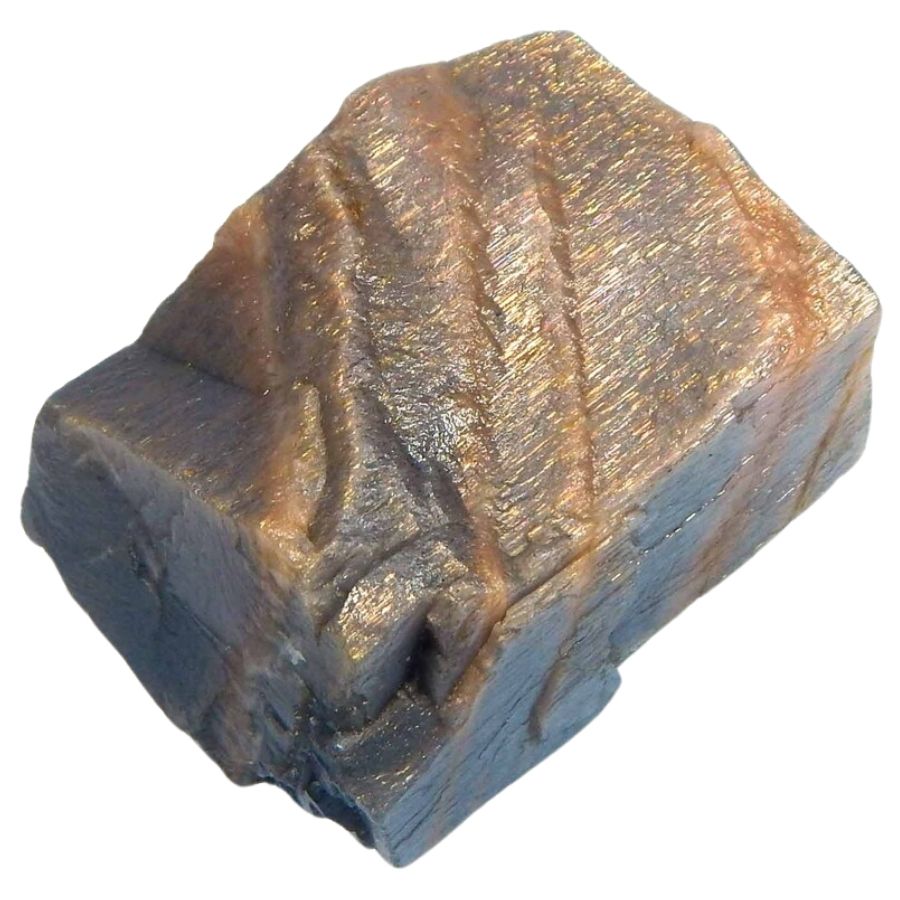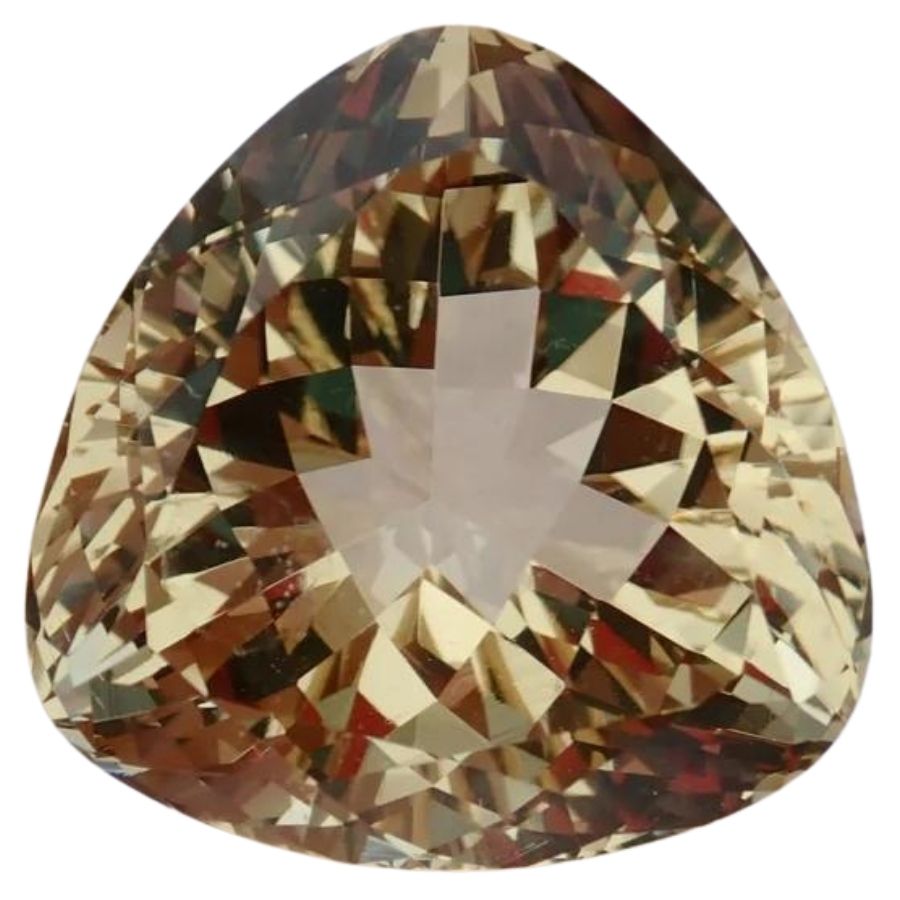Feldspar is one of the most common minerals found in the Earth’s crust, and it forms some really fascinating varieties.
Amazonite, orthoclase, and microcline are great examples of the types of feldspar, each with their own unique appeal and characteristics.
Feldspar isn’t just a pretty face in the world of minerals; it’s incredibly useful too. This mineral plays a huge role in industries like electronics, where it’s used in manufacturing, jewelry for its beauty, and even in construction materials.
The 12 Different Types Of Feldspar And What They Look Like
Feldspar forms in a variety of geological settings, from deep within the Earth’s crust to the cooling lava of a volcano. This diversity in formation environments is a big reason why there are so many different types of feldspar.
The range of colors seen in feldspar is due to trace elements and impurities that get mixed in during its formation. These tiny differences in its makeup can turn feldspar into a spectrum of colors, from pearly whites to vibrant greens.
Amazonite

Amazonite is a really fascinating type of feldspar, known for its striking color. It’s composed mainly of potassium and aluminum, giving it some unique characteristics.
This mineral is easily recognized by its beautiful green to blue-green color, which can vary in intensity. The color variations in amazonite are mainly due to the presence of lead and water in its structure.
One distinct feature of amazonite is the way it’s often found in clusters of crystals or in large masses. It also has a distinctive grid-like pattern on its surface, which makes it stand out among other minerals.
Where you can find amazonite
Amazonite can be found in various locations around the world, including Russia, Brazil, and the United States, particularly in Colorado and Virginia. These places are known for their rich deposits of this beautiful green mineral.
If you’re excited about discovering more cool rocks like amazonite, check out our rockhounding guide. It’s filled with information on the best rockhounding locations and how to find awesome minerals and gems.
If you want REAL results finding incredible rocks and minerals you need one of these 👇👇👇
Finding the coolest rocks in isn’t luck, it's knowing what to look for. Thousands of your fellow rock hunters are already carrying Rock Chasing field guides. Maybe it's time you joined the community.
Lightweight, mud-proof, and packed with clear photos, it’s become the go-to tool for anyone interested discovering what’s hidden under our red dirt and what they've already found.
Join them, and make your next rockhounding trip actually pay off.
What makes it different:
- 📍 Find and identify 140 incredible crystals, rocks, gemstones, minerals, and geodes across the USA
- 🚙 Field-tested across America's rivers, ranchlands, mountains, and roadcuts
- 📘 Heavy duty laminated pages resist dust, sweat, and water
- 🧠 Zero fluff — just clear visuals and straight-to-the-point info
- ⭐ Rated 4.8★ by real collectors who actually use it in the field
Moonstone

Moonstone is a captivating mineral that’s part of the feldspar family, composed primarily of potassium aluminum silicate. Its name comes from its unique, moon-like sheen.
This gemstone can display a range of colors, from colorless to white, grey, and even hints of peach, blue, and green. The color variations in moonstone are often due to the presence of different types of feldspar within the stone.
What really sets moonstone apart is its phenomenon called adularescence – a soft, glowing light that seems to move across the stone’s surface.
This glow, combined with its often translucent quality, gives moonstone a dreamy, ethereal look that’s truly enchanting.
Where you can find moonstone
Moonstone is found in various parts of the world, with notable locations including Sri Lanka, India, and Madagascar. You can also find moonstone in the United States, particularly in states like Pennsylvania and Virginia.
Sunstone

Sunstone is an intriguing member of the feldspar family, primarily made up of elements like sodium, calcium, and aluminum. This mineral is well-known for its sparkling, reflective inclusions that give it a sun-like appearance.
The color of sunstone ranges from orange and red to brown and even green, depending on the specific mineral inclusions and how they’re arranged.
These colors are often enhanced by tiny plate-like inclusions of copper or hematite, which catch the light and create a glittering effect.
One of the most distinctive features of sunstone is its aventurescence, a shimmering or glittering effect caused by these reflective inclusions.
This makes each piece of sunstone unique, with a sparkling quality that seems to change when you move the stone in the light.
Where you can find sunstone
Sunstone can be found in several places around the world, with some of the most famous locations being India, Canada, and Norway. In the United States, Oregon is particularly well-known for its beautiful and unique varieties of sunstone.
Albite

Albite is a fascinating mineral, part of the plagioclase series of the different types of feldspar. It’s composed mainly of sodium and aluminum silicate, giving it some unique properties.
This mineral is usually white or pale in color, but it can also show shades of blue, green, or pink. The variety in albite’s color is often due to tiny amounts of other elements that get mixed in during its formation.
Albite is known for its perfect cleavage, meaning it can split along very smooth, flat surfaces.
Another cool thing about albite is that under certain conditions, it can show a play of colors or a pearly reflection, which makes it quite interesting to rock collectors.
Where you can find albite
Albite can be found in many places around the world. Some of the notable countries where albite is located include Canada, the United States, Norway, and Brazil.
Oligoclase

Oligoclase is a fascinating type of feldspar, primarily made up of sodium, calcium, and aluminum silicate. It’s a part of the plagioclase series and shares similarities with both albite and anorthite.
In terms of what feldspar looks like, oligoclase typically presents in white, gray, or greenish shades. The color variations in oligoclase are influenced by the varying amounts of sodium and calcium in its composition.
A distinct feature of oligoclase is its twinning, where two crystals grow together in a symmetrical pattern.
This mineral can also display a beautiful play of colors, known as adularescence, making it particularly appealing to those fascinated by geology and gemology.
Where you can find oligoclase
Oligoclase is found in various parts of the world, including countries like Norway, the United States, and Canada. In the United States, some notable states where oligoclase is located are Maine and Virginia.
Andesine

Andesine is an interesting member of the plagioclase feldspar group, mainly composed of sodium, calcium, and aluminum silicate. It’s named after the Andes Mountains where it was first discovered.
Andesine usually displays colors ranging from red to green, though it can also be found in gray or blue tones. The variety in its colors is due to the varying amounts of iron and calcium in its makeup.
One of the cool things about andesine is its ability to show a play of colors, similar to the shimmer you see in a soap bubble. This effect, combined with its transparency, makes andesine a fascinating mineral for both geology fans and rock collectors.
Where you can find andesine
Andesine can be found in various locations around the globe, with some notable places being the Congo, China, and Mongolia. In the United States, Oregon is also a known location for finding andesine.
Labradorite

Labradorite is a type of feldspar known for its captivating colors and composition. It’s mainly made up of sodium, calcium, aluminum, and silicon.
When you look at labradorite, it’s like seeing a stormy sky at night. It typically shows off a dark base color, with flashes of blue, green, gold, and sometimes even purple or orange.
What’s really cool about labradorite is its labradorescence. This is a fancy word for the way light dances across the stone, creating a dazzling effect that seems to change when you move it in the light.
Regarding the monetary aspect, the price of labradorite varies. It depends on factors like quality, rarity, and demand, but generally, feldspar is an accessible gemstone for many collectors and geology enthusiasts.
Where you can find labradorite
Labradorite can be found in several parts of the world, with some notable locations being Canada, especially in Newfoundland and Labrador, and in Madagascar. You can also find beautiful specimens of labradorite in Finland, Russia, and Australia.
Bytownite

Bytownite is a fascinating member of the plagioclase feldspar family. It’s a bit of a rare find in the feldspar group, making it quite intriguing.
Bytownite typically has a color range from pale yellow to a rich, golden hue. These color variations are often due to the specific mix of elements like calcium and sodium in its crystal structure.
One of the unique features of bytownite is its characteristic sheen, which is especially noticeable when polished. This sheen, along with its rarity, makes bytownite a mineral of interest for both rock collectors and geology enthusiasts.
Where you can find bytownite
Bytownite, a rare and captivating mineral, can be found in a few places around the world. Notably, it has been discovered in Canada, particularly in Ontario, as well as in Mexico and Norway.
Orthoclase

Orthoclase is a type of feldspar that’s known for its beautiful crystals. It’s mainly made up of potassium, aluminum, and silicate, which give it some interesting properties.
This mineral can be found in a range of colors, from colorless and white to shades of pink and red. The variety in colors of orthoclase is due to the different amounts of impurities, like iron or titanium, that might be mixed in with it.
A really cool feature of orthoclase is its cleavage, which means it can split along flat planes in a certain way. This, along with its crystal habit, makes orthoclase fascinating and a favorite among rock collectors and those who love geology.
Where you can find orthoclase
Orthoclase is found in many parts of the world, with notable locations including Italy, Madagascar, and the United States, especially in states like California and Colorado. It’s often found in granite and other types of igneous rocks.
If you’re excited about discovering crystals like orthoclase, check out our crystal/gem mining guide. It’s full of tips on how to find crystals near you and makes for a great adventure into the world of geology.
Microcline

Microcline is a fascinating type of feldspar, primarily made up of potassium, aluminum, and silicate. This mineral is known for its unique crystal structure and is a part of the alkali feldspar group.
In terms of appearance, microcline often showcases colors like white, cream, pale yellow, and even shades of pink or green. The color variations are usually due to slight differences in its chemical composition or the presence of trace elements.
One of the most notable features of microcline is its grid-like pattern, known as “tartan twinning.”
This distinctive pattern, along with its variety of colors, makes microcline a really interesting and attractive mineral for collectors and geology enthusiasts.
Where you can find microcline
Microcline can be found in many places around the world, including the United States, particularly in states like Colorado and Maine. It’s also found in countries such as Brazil, Italy, and Norway, often in granite and pegmatite deposits.
Sanidine

Sanidine is a high-temperature form of potassium feldspar, part of the diverse feldspar types. It’s mainly composed of potassium, aluminum, and silicate, making it an interesting study in mineralogy.
This mineral usually appears in shades of white or cream, but can also show off colors like gray, pale yellow, and even orange or brown.
The color variations in sanidine are due to factors like the presence of other minerals and the conditions in which it formed.
A standout feature of sanidine is its glassy luster, giving it a shiny, almost reflective surface. Additionally, it’s known for its short, stubby crystals, which can be quite striking and are a draw for rock collectors and geology fans.
Where you can find sanidine
Sanidine can be found in volcanic regions around the world, especially in areas known for their explosive volcanic activity. Some of these locations include Italy, Germany, and the United States, particularly in states like New Mexico and Montana.
Anorthoclase

Anorthoclase is a fascinating type of feldspar that’s made up of sodium, potassium, and aluminum silicate. It’s part of a group known as alkali feldspars, which have some unique characteristics.
In terms of appearance, anorthoclase typically presents in shades of white, gray, or even light yellow. The color variations in this mineral are often due to the varying amounts of sodium and potassium in its structure.
One of the cool things about anorthoclase is its crystal habit, which means the shape it naturally forms in.
These crystals can be quite large and often have a unique, blocky appearance, making anorthoclase a real point of interest for rock collectors and those passionate about geology.
Where you can find anorthoclase
Anorthoclase is mainly found in areas with volcanic activity. Notable locations include Italy, Kenya, and the United States, particularly in the state of Colorado.



